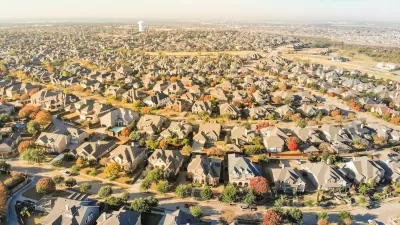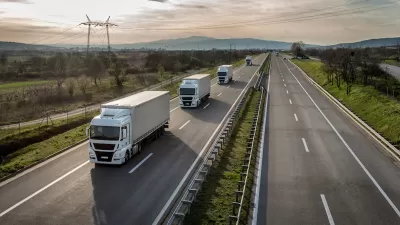A new Intel facility is set to bring thousands of workers to rural Ohio. Will the state embrace mass transit or give in to auto-centric sprawl?

In an opinion piece in Columbus Alive, Brian Williams argues that “Publicly funded transit must have a place alongside publicly funded auto travel in the massive Intel development” currently underway in Ohio. “With Intel bringing thousands of employees to the vanishing farmland halfway between Columbus and Newark, we can routinely dump hundreds of millions of dollars into ever-widening I-270 and Rt. 161. Or we could connect with the 21st century and build an easier-to-maintain and higher-capacity rail line.”
According to Williams, “It’s not just a matter of getting people from Columbus to Intel. It’s about understanding and shaping the region’s needs over the next several decades.” For Williams, “The advantage of rail is that walkable communities could develop at stations along the way and avoid the spread-out development and parking lots that would gobble up the rest of the rich farmland in western Licking County.”
The piece argues that “If the site is developed in a way intended to accommodate cars, it will be chock-full of cars no matter how much transit exists. Instead, the area should be laid out in a way that accommodates transit and pedestrians.” Williams admits this will be hard to achieve given the region’s existing sprawl, but continuing to fund car-centric development will only perpetuate an unsustainable model.
FULL STORY: Will Intel spur mass transit or inspire more car-driven sprawl?

Alabama: Trump Terminates Settlements for Black Communities Harmed By Raw Sewage
Trump deemed the landmark civil rights agreement “illegal DEI and environmental justice policy.”

Study: Maui’s Plan to Convert Vacation Rentals to Long-Term Housing Could Cause Nearly $1 Billion Economic Loss
The plan would reduce visitor accommodation by 25% resulting in 1,900 jobs lost.

Why Should We Subsidize Public Transportation?
Many public transit agencies face financial stress due to rising costs, declining fare revenue, and declining subsidies. Transit advocates must provide a strong business case for increasing public transit funding.

Wind Energy on the Rise Despite Federal Policy Reversal
The Trump administration is revoking federal support for renewable energy, but demand for new projects continues unabated.

Passengers Flock to Caltrain After Electrification
The new electric trains are running faster and more reliably, leading to strong ridership growth on the Bay Area rail system.

Texas Churches Rally Behind ‘Yes in God’s Back Yard’ Legislation
Religious leaders want the state to reduce zoning regulations to streamline leasing church-owned land to housing developers.
Urban Design for Planners 1: Software Tools
This six-course series explores essential urban design concepts using open source software and equips planners with the tools they need to participate fully in the urban design process.
Planning for Universal Design
Learn the tools for implementing Universal Design in planning regulations.
Caltrans
Smith Gee Studio
Institute for Housing and Urban Development Studies (IHS)
City of Grandview
Harvard GSD Executive Education
Toledo-Lucas County Plan Commissions
Salt Lake City
NYU Wagner Graduate School of Public Service





























